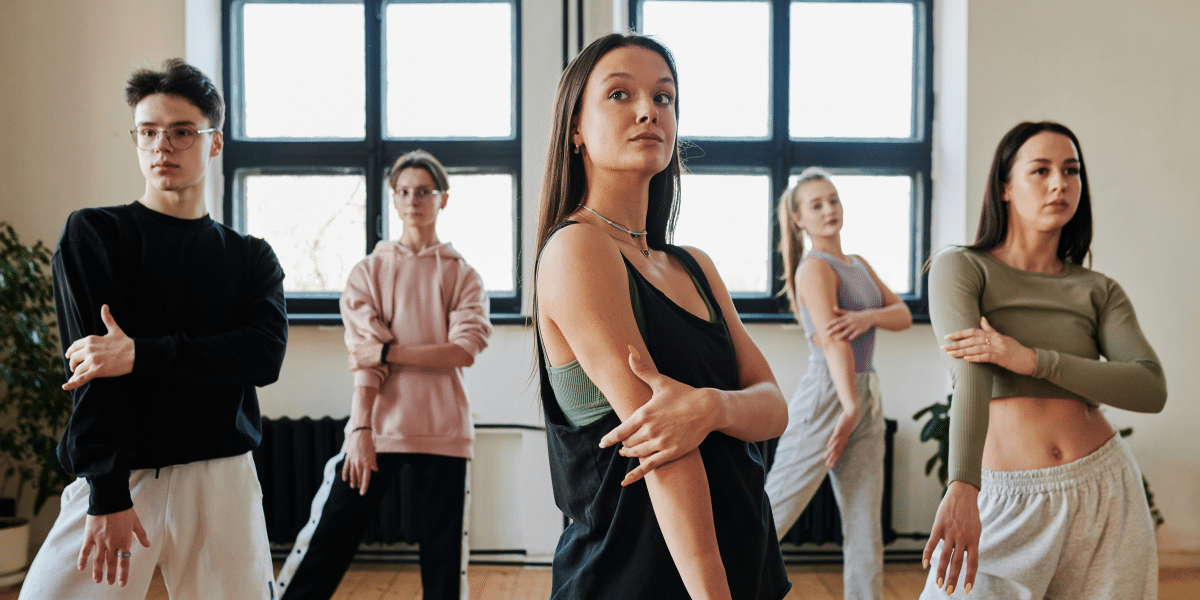Earlier this month, the street outside Prada’s menswear show in Milan was packed with screaming fans, the bulk of whom appeared to be there for Korean pop duo Enhypen, who attended the event. Devotees periodically burst into song, intoned tunes by the boy band.
A few years ago, such a scenario would have been unheard of: most events drew only small crowds of fans looking for celebrity sightings. Yet, as South Korean pop music becomes a global obsession, and as luxury megabrands sign more and more deals with its top performers, fervent young K-pop fans have become a fixture.
The enthusiasm shows no signs of abating: appearances by Korean singers such as EXO’s Kai at Gucci, Enhypen at Prada, and J-Hope (from supergroup BTS) at Louis Vuitton in the last week alone have lit up social media with men’s fashion week content. On Monday, Dior revealed a collaboration with BTS member Jimin, who will attend its show on Friday, while Valentino announced a collaboration with the group’s rapper, Suga. (BTS is presently on hiatus due to members’ military service).
According to sources close to the brand and the band, even the traditionally low-key, “stealth wealth” house Bottega Veneta is in talks to sign a menswear deal with a BTS member. Likewise, over recent womenswear seasons, Blackpink members Lisa (a Celine ambassador), Jisoo (at Dior), and Jennie (at Chanel) gathered ever-larger groups of admirers while generating critical internet discussion.
The rise of K-Pop supergroups, whose influence swept Asia in the 2010s before extending to Europe and the Americas, has coincided with Korean cultural achievements in other media, such as streaming sensation Squid Game and blockbuster films like “Parasite” and “Minari.” In addition, businesses have long sought Korean stars for their fans’ near-fanatical level of social media involvement, and their popularity has only grown in recent years, both domestically and worldwide.
According to Launchmetrics, South Korean celebrities have become the most important celebrity voices for driving media exposure during fashion week, with social media posts by or about them generating up to 41% of the celebrity and influencer buzz for Milan’s Fall-Winter 2021 womenswear season. According to fashion firm Karla Otto and marketing consultancy Lefty, that percentage might have grown to 50% at the recent Milan Men’s Fashion Week.
Korean idols’ internet reach can even eclipse that of the most well-known, digitally adept Western stars: According to Launchmetrics, a collaboration between Kim Kardashian and Dolce & Gabbana in which the reality TV star and mega-influencer helped “curate” and style the brand’s September 2022 show garnered $4.6 million in headlines and internet attention. Similarly, Jisoo of Blackpink generated $7 million in buzz for Dior’s show in Paris the same season, mostly by just appearing there.
South Korea to the world
Last year, South Korea was a bright spot for luxury brands in Asian markets, with sales reaching an all-time high. According to a recent Morgan Stanley study, the market has grown by roughly 40% since pre-pandemic levels in 2019. As a result, South Koreans are now the world’s greatest per capita spenders on luxury goods, and “for a number of significant brands, such as Prada, Moncler, Bottega Veneta, or Burberry, we believe Korean nationals now account for 10% or more of total retail sales,” analyst Edouard Aubin remarked.
Yet, the greater frequency of collaborations with Korean talent isn’t just due to the star’s increased prominence in his or her local market.
In China, K-pop supergroups are so well-known that the Chinese government has attempted to crack down on what it views as “irrational” behavior from K-pop fan club members, such as purchasing several copies of an album to promote sales for a favorite act. Nevertheless, K-pop acts are very popular in Southeast Asia’s small but continuously expanding market. Overall, Asian clients — and the celebrities most likely to reach them — are expected to remain in the spotlight this year, as growth in the United States and Europe, which have powered the luxury industry since the epidemic’s conclusion, is expected to decrease dramatically.
K-pop is beyond reach
Working K-pop stars have a bigger audience than they realize: A strict system of studios that craft, control, and fiercely preserve their images intensely trains and closely supervises performers. Sadly, this means they offer little reputational risk to the brands they cooperate with.
According to fashion executives involved in the recent spike of K-Pop alliances, collaborations with these singers are also considered appealing investments due to their enhanced “prescriptive” effect among their fans. In addition, many Asian performers are less reticent than Western performers to promote brands or objects to viewers directly. As a result, their admirers regularly purchase the items celebrities advertise to show their support for their favorite musicians.
Nevertheless, industry sources believe the agreements are about more than just growing sales. K-Pop stars are typically vocal dressers, eager to experiment with fashion to separate themselves from their supergroups. As a result, they are tempting partners for brands and designers aiming to create unique and exhilarating fashion moments.
Read Also: Gen Z dealing with extreme workplace stress
Throughout fashion week, brands are willing to stoke the flames of local K-pop enthusiasts who attend their events. For example, Jimin’s presence on Dior’s forthcoming menswear runway was announced last Thursday. The show would “celebrate Dior’s association with a member of 21st-century pop superstar BTS,” according to the brand.











